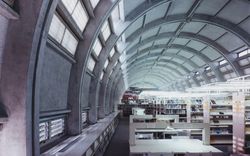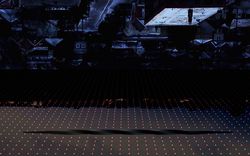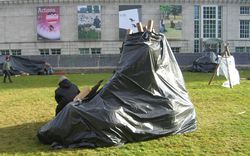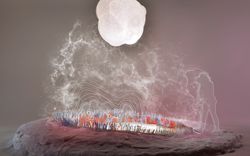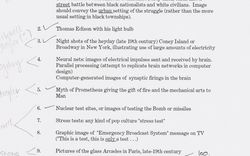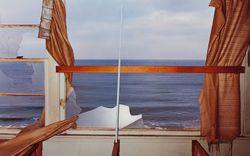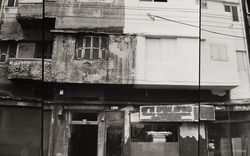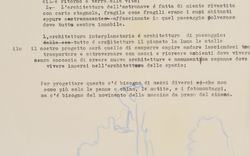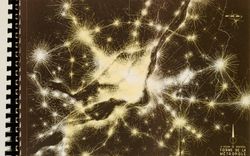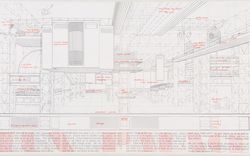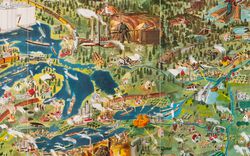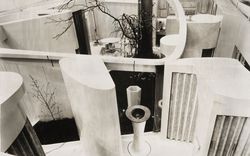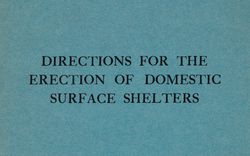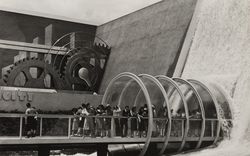1977: Zuma number 3
Text by Richard Pare
This photograph by John Divola, from the Zuma portfolio, was made in 1977 at the height of the period that was concerned with minimalism and performance art. Divola has always pursued an independent approach to photography and one that is informed by larger ideas of the art world beyond simple representation. There are often subcurrents in these photographs that speak to larger issues. The present example treats ideas of destruction and creation, intervention and observation, opacity and transparency, positive and negative space performance and audience, violation and respect, and violence and tranquility.
The site was a beach house and in itself represents the land hunger of the West Coast. Houses were built—continue to be built—on marginal land subject to flash floods, earthquake, mudslides, brush fires, and in this example, coastal erosion. The photographer was fascinated by the manifestations of this kind of excess and began the exercise simply in an effort to record the destruction. At the time the picture was made, the photographer had no studio and instead took his camera to abandoned properties, which became a surrogate for the studio. From this it was a logical extension to begin to intervene in the spaces and turn the “studio” into the work. In the evolution of the series, the desire to intervene in the space, to have a larger voice in the work, became stronger and equated with ideas of vandalism and creation. These polar extremes create a tension in the photograph that is emphasized by the character of the photograph, in which the harshness and artificiality of the flash illumination of the interior is at odds with the tranquility of the calm sea in the sunny exterior world. The jagged edges of the broken glass are both reflective and transparent; the blue pole, presumably a found object, offers a vertical gesture though with little dominance as it almost disappears into the sky, creating a different kind of tension that derives from the ambiguity of its position and the meaning of the gesture.
The photograph elicits a variety of responses. The first impression is one of threat; this is exemplified by the uneasy sense of disorientation between the shifted ground and the horizon. This uneasiness persists and remains the dominant characteristic of the picture followed by curiosity that is never satisfied, as we are left unaware of the circumstances under which the picture was made and also of the eventual conclusion of the incident. This unexplained futurity becomes integral with the performance aspect of the work. The assumed destruction by the erosion of the ground on which the house stands remains in the future of the photograph even though we know that by now the building has long vanished. Was it destroyed by man or by nature? How long did it survive? What was the eventual format that the dissolution took, fire or water?
This essay was originally published in Casabella in June 2000.
